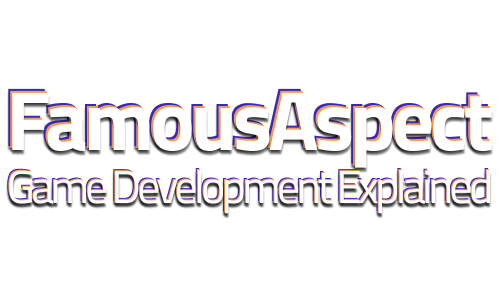 Rich Hilleman is the Chief Creative Director of EA. He is one of EA’s earliest employees and is best known for helping to build the juggernaut EA Sports business as the original producer of games including John Madden Football, NHL Hockey and Tiger Woods PGA Tour. This is the third part of an interview that took place in April, 2012. Part 1 and part 2 were previously posted to this blog.
Rich Hilleman is the Chief Creative Director of EA. He is one of EA’s earliest employees and is best known for helping to build the juggernaut EA Sports business as the original producer of games including John Madden Football, NHL Hockey and Tiger Woods PGA Tour. This is the third part of an interview that took place in April, 2012. Part 1 and part 2 were previously posted to this blog.
EL: For the young designers you coach and help craft and bring into EA, what do you think is the biggest frustration point that they should be prepared for as a commercial game designer?
RH: So we’re a fantasy job, meaning lots of people who come into our business grew up their entire lives wanting to be videogame designers. You’ve got one of those guys named Blade Olson. You’ve met him. He literally is one of those people that I believe the first conscious thought he had was, “How do I get to make videogames?”
So we have a lot of those people in our business nowadays. And what is joyous about them, absolutely wonderful about them, is the depth of their appreciation for being in the business and their enthusiasm every day for what they can do.
The bad news is they have no idea what the job is before they walk in the door. When you’ve really invested a lot of time in the fantasy that you think something is, and then it’s confronted with the reality that’s different—not better or worse, just different—it’s a jarring event for most of those people.
And what I try and do is make sure I have a conversation that talks about how the business works from the perspective of the business, not the customer. If you’re a customer, you tend to think, “Well, it’s just all about making great games. You make great games and it all works.” And it’s like, ehhhh, not really.
I try and get them to be aligned with how the decision-making process works within companies, about how they decide what games get made or don’t get made. Usually what happens is, people come in and they’re very frustrated for the first three or four years because they can’t get their game made.
First of all, that’s not a realistic expectation. Number two, are you sure that’s actually the game you want made? Chances are, after you’re here for three years and you’ve actually sat down and re-evaluated how things really work, I’ll bet it isn’t the game you want made anymore.
If it is, then for God’s sakes, let’s make it. If it’s survived three years and all of that time, chances are it is the game you want made. In most cases, it isn’t. In most cases, what’s happened is you have figured out that it needs to be something else to be successful and to meet what you want it to be.
So I think that the hardest lesson for people to learn is the disconnect between the fantasy that they have in their head. Oddly enough, it’s a game design learning opportunity because that same fantasy is the thing you want to exploit in simulations, for instance.
It can damage your ability to see the world as it is versus the way you wish it was.
EL: Can you share an important lesson you have learned about design during your career?
RH: is about the harnessing of imagination. And that sounds really simple and it sounds really obvious, that it’s about making things up. That’s actually very little of what I mean.
Harnessing imagination is not just about your imagination, it’s about other people’s imagination and about those who you’re going to make the product with. The process of figuring out what the product should be is one of the simpler parts of making one. Getting other people to see what you see, to understand what you understand, to protect what you feel needs to be protected, and to cherish and love and invest in the things that need to be invested in. And then to make the organization understand that, to make the sales organizations understand that, to make your other partners understand that, and ultimately to make your customers understand that. To understand how to harness all of those imaginations at one time and to see something that doesn’t exist is a hell of a trick.
That means that your imagination is important, but your ability to understand other people’s imaginations is much more. And I think that’s the part that most designers don’t ever quite get, is how much of it is about other people. That it is a seemingly selfish endeavor to have our own vision for what we wish to make and then to get to make it. When you pull that, when you get somebody else to give you a bunch of money to make something you want to make, that’s a hell of a trick.
Unfortunately that’s only half the trick. The other half of the trick is then making that work. And the parts that are important about making that work are all those other imaginations.
I think designers have a very good and very quick approach to getting to that, to satisfying their own sense of their imagination, maybe even to satisfy the customer’s sense of what their experience will be, but forget about everybody else. And they don’t do very well, and they’re very unhappy usually.
I’ve watched good designers who still have a hard time with that. I think David Jaffe’s a very interesting example of a guy who is truly and passionately in love with his players, and truly and passionately in love with his vision, and very irritated with every other part of the process, and finds that it gets in his way.
I think Peter Molyneux has expressed it somewhat that way. I think Alex Ward for Criterion has shown some of those same things. Guys like Will Wright, when they’re at their best, they’ve figured out how to be above all of that. And when they’re at their worst, they’ve tried to manipulate it.
So, who are people who are good at it? I think Cliff Bleszinski’s pretty good at balancing it.
I think that other people have struggled with getting other people to do that stuff for them. A guy like American McGee needs to be produced. Will Wright needs Lucy Bradshaw. David Jaffee needs Shannon Studstill. Sometimes these people are incomplete. They need the other half.
EL: It’s very similar to sentiments Michael John had that basically a design leader isn’t necessarily someone with the great idea. It’s someone who can inspire a bunch of people to move in one direction at the same time.
RH: Inspire and communicate. That’s right.
It’s one of the dangers. There’s a certain value to managing by ambiguity in creative endeavors, which is not to define too much. So I say, “We’re gonna go make the world’s greatest videogame,” and then that’s all I say. And I walk away. Well, what are the odds that you and I see the same thing in our heads? Probably zero. [laughs]
But on the other hand, if I said that and we’re going to be blissfully ignorant of the fact that we’re going to have a different vision, what are the odds that both of us are happy at the same time? Pretty close to 100%.
So the challenge is, in this context, how specific does that imagination have to be? How specifically the same does it have to be? Versus how much of the process do you let sort that out? If you’re going to work with a team of people to make something, sometimes your exact vision of how the sounds should work isn’t going to be the best vision.
When you said the best sound you could ever imagine, the complexity and their grasp of what that can be far exceeds your ability to express it to them, let alone even understand what it means.
So that’s the interesting tension: how specific your vision is and how specifically you try and convey that versus how much you try and convey the experience you want the user to have or the emotional sense that you want the people who are building it to create for themselves.
Sometimes that ends up with a mess: you end up with products that are going seven different directions because you’ve never figured out how to unify that vision. That’s bad producing and bad designing, I’d say, at the same time. But if you do that well, it’s almost magic because it doesn’t just become the best thing it can be. It becomes the best thing all of you together could imagine. That’s really magic, I think. And it happens, by the way. Surprisingly, if you do things the right way and work with the right people, it happens a surprising amount of the time.
MORE FROM RICH
On Game Design with Rich Hilleman (Part 1)
On Game Design with Rich Hilleman (Part 2)
READ MORE
Michael John, General Manager of GlassLab
Paul Barnett, General Manager of EA Mythic
Jenova Chen, Chief Creative Officer at thatgamecompany
